Colectomatic Mark II
The Duo-Press Revolution
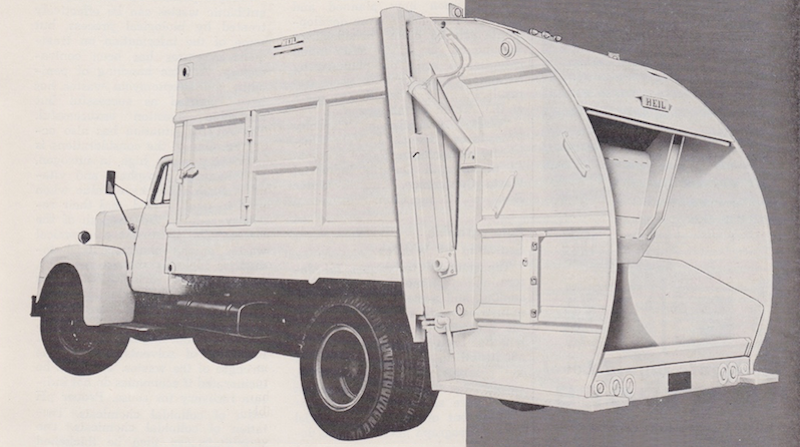
The groundbreaking Heil Colectomatic Mark II, introduced in late 1960 The first Colectomatic, rushed into production during 1953, and revised again the following year, had been successful in establishing Heil as a competitor in the maturing rear loader market of the 1950s. But the last part of the decade brought intensifying competition within the industry, with new models entering the fray, and established designs being continually improved. The Leach Packmaster received a larger, wider hopper for 1955, and the ability to handle wheeled containers. Gar Wood abandoned the original Load-Packer concept in 1957 for the radical LP-500 "Cyclomatic" series, the fastest-cycling rear loader available. Heil Company would not only rise to this challenge, it stunned the industry with a concept would completely alter the course of refuse truck design forever. The Colectomatic Mark II was officially unveiled on August 14, 1960, during the American Public Works Association annual convention in New York City, with a special showing and luncheon held in Central Park. The operating principle remained the same as the original Colectomatic, with a hinged hopper cleared by a pivoting packer blade, but the power means were greatly simplified. The complex bell crank packer linkage was eliminated, replaced by six direct-acting hydraulic cylinders. Two double-acting rams operated the packer panel from high inside the tailgate, and a separate pair of 3-stage telescopics lifted the bucket. Two more single-acting rams, independent of the packer, now lifted the tailgate for discharge of the load. Electrically controlled, pilot-operated valves ran the entire cycle through simple push-button switches, an industry first and a dramatic technical leap for 1960. Halfway through the packer panel retract, exhaust fluid from those cylinders was routed directly to the bucket lift rams, instead of returning to the reservoir. This "regenerative" hydraulic circuit helped speed-up the cycle time. The telescopic bucket rams were sized to operate in perfect synchronization with the packer rams. The result was a powerful packer with a smooth and efficient action, a brilliant rework of the original design. By themselves, these improvements to the packer would have been noteworthy, but Heil delivered an even bigger breakthrough with the addition of hydraulic ejection discharge, with compaction. Dubbed the Duo-Press system, it consisted of a movable barrier within the body, powered by a telescopic cylinder, the first practical use of this method in a rear loader. Gone forever were sticking payloads and the dangers of unloading large bodies on unstable ground; the Mark II simply raised its tailgate, and with a pull on the front-mounted lever, bulldozed its load out the back of the body. This feature, taken for granted today, was virtually nonexistent on rear loaders at the time. To be sure, there were earlier examples of the basic concept; The 1938 Eagle Compressmore Ejector used a telescopic-powered barrier to unload, but it's packing action was more akin to side loader, and saw limited production. Sicard came even closer in 1945 with their Sanivan, and enclosed rear-load packer which used single-stage rams and a folding ejector panel. Unlike these examples, Heil actually made the ejector panel integral to the packing process, as well as for unloading. With the Duo-Press system, the ejector panel worked in concert with the tailgate packer mechanism in two possible ways. The simplest option was to start the load with the ejector fully forward, and as the body became filled, to cycle the panel rearward periodically, thus reducing voids in the load. The preferable method was the automatic Duo-Press, where the ejector was positioned at the rear the body prior to the start of the route. The first few packing cycles filled this reduced space, and soon began crushing the load between the packer and ejector panels. When maximum density was reached, pressure on the ejector blade caused the ejector cylinder relief valve to open, allowing the panel to creep forward slightly, and then lock again. This incremental movement against constant pressure would repeat itself until the ejector reached the front wall, obtaining uniform density throughout the entire load. Coupled to the powerful new tailgate design, the new Mark II was like nothing the industry had ever seen. Only the Leach 2-R Packmaster could match it, strictly through the brute strength of its packer, but still had the disadvantage of a tilt-to-dump body. Heil had not only come up with a "Packer for the 60s," they had in fact designed the refuse truck of the future. 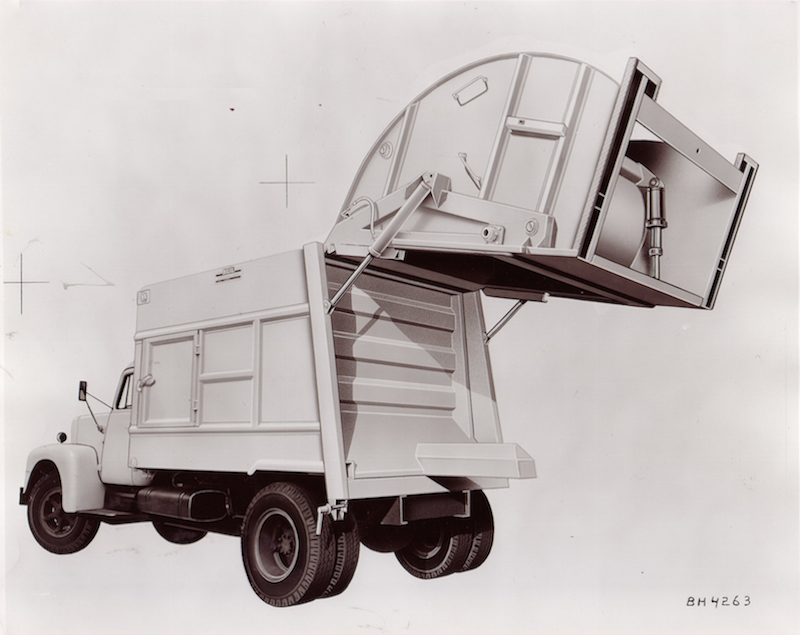
The Mark II ejector blade, which was also an integral part of the Duo-Press compaction system Design of the Mark II was by Heil's chief engineer, George Urban, who had also worked on development of the first Colectomatic from Mike Murphy's original patent. Later, it would be the subject of a lawsuit filed by Henry Berolzheimer, a Chicago Public Works official who claimed to have invented the Duo-Press system, and sought retroactive assignment of the patent rights. The claim was based on his 1957 meeting with Urban, as well as Joe Heil, in which he pitched his idea (unsuccessfully) for a continuous-loading type packer with a hydraulic ejector. Heil acknowledged the meeting, and drawings were witnessed at the time, but Berolzheimer's claim was for the loader mechanism, with no mention of the ejector being used as a compaction means. Straight ejection unloading did exist in prior art, further negating his claim. At best, Berolzheimer may have inspired Heil to come up with Duo-Press compaction, but the concept was not part of his proposal of 1957, and thus Heil prevailed in the case. 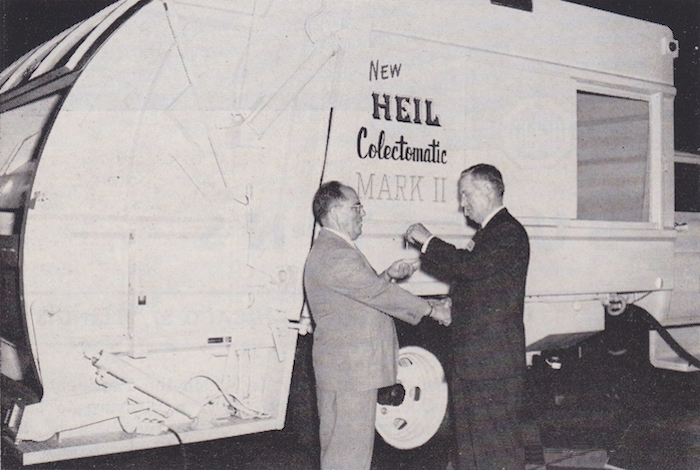
Joseph Heil hands over the keys to the first Mark II sold, at the 1960 APWA convention in New York. Buyer was the City of Middletown, Connecticut 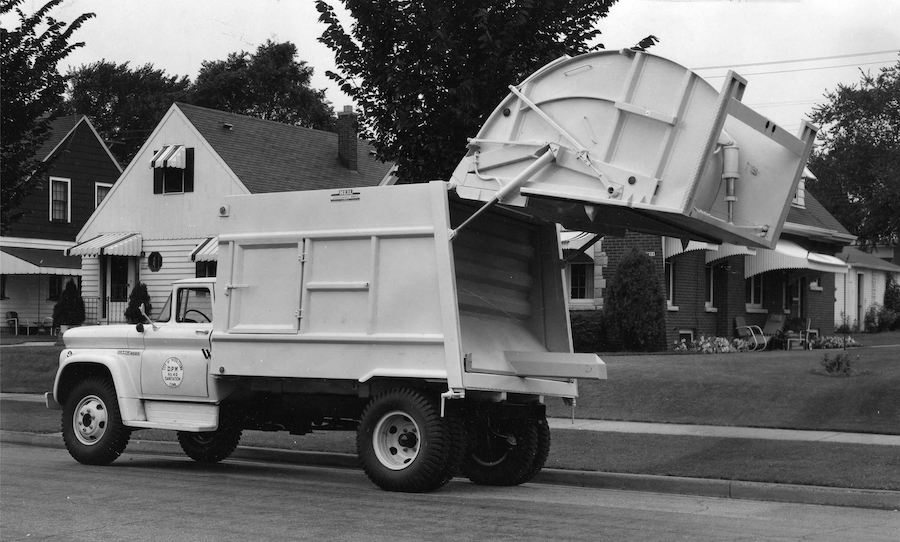
Another Mark II in service with the City of Middletown, a 16-yard body on a 1960 GMC chassis A container hoist was offered as an option on the Mark II, the first ever on a Heil rear loader. The arm-type hoist with gravity latches was electrically controlled, and could empty 1-cubic yard wheeled containers. A manually operated valve diverted fluid from the bucket cylinders to the lift arm cylinders, located on the tailgate riding steps. A folding extension of the hopper bucket was used to prevent trash falling out during the dumping of the container. The extension could be left up for hand-loading, increasing the hopper capacity slightly. The system worked well enough, but caution had to be used; if the "packer start" button was depressed while a container was hoisted, the retracting packer panel would damage the can and/or the hoist.
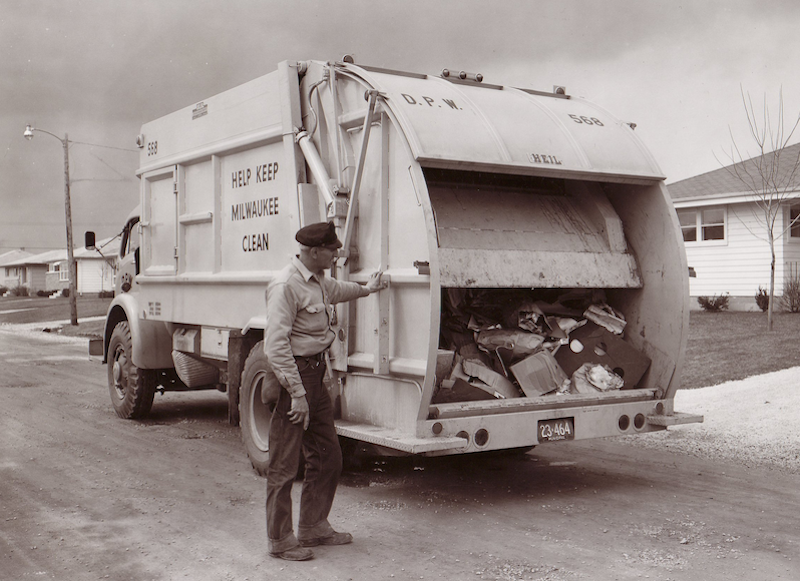
20-yard Mark II with the City of Milwaukee, initially the largest size available 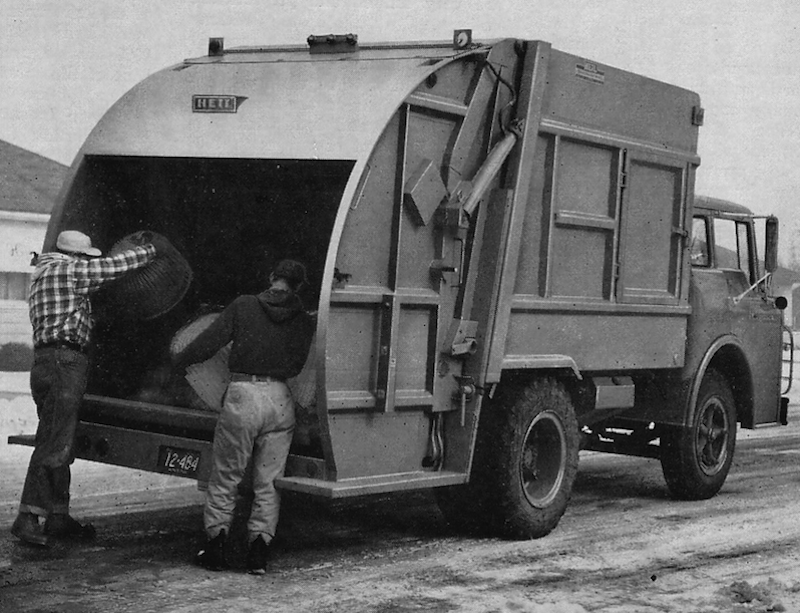
13-yard model was the smallest Mark II 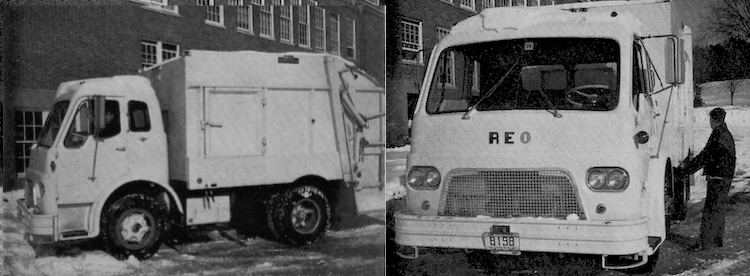
Rural New Hampshire contractor replaced an open dump truck with this 13-yard Mark II on a REO cabover truck. At right, operator cycles the Duo-Press ejector blade to compress load inside body 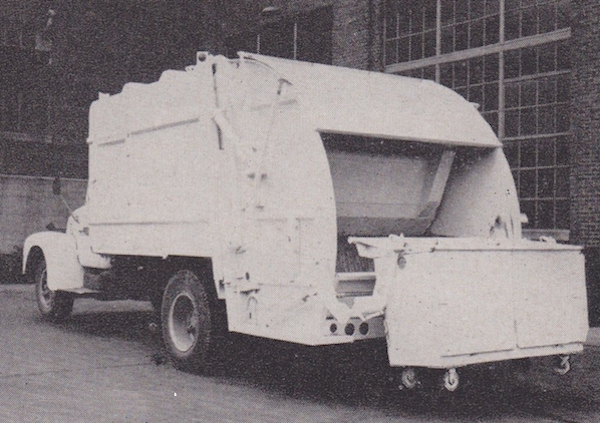
The Mark II could be fitted with an arm-type hoist, which could service 1-yard wheeled containers 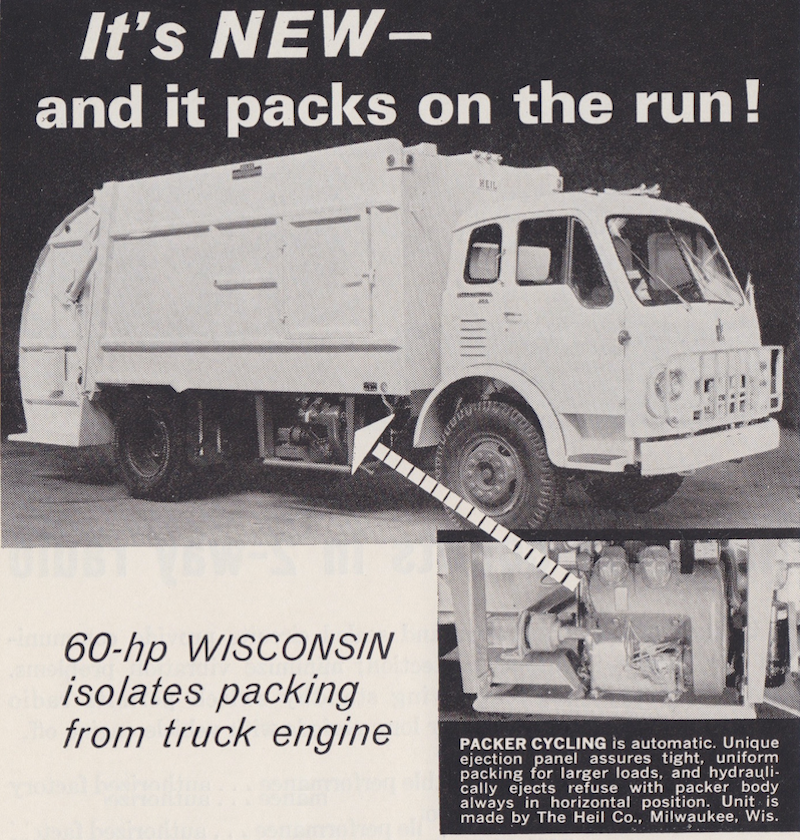
Optional air-cooled Wisconsin engine could be used to power the hydraulic pump, allowing the packer to cycle while the truck was in motion. This was a major time-saver in the era before crankshaft-driven pumps and hot-shift PTOs 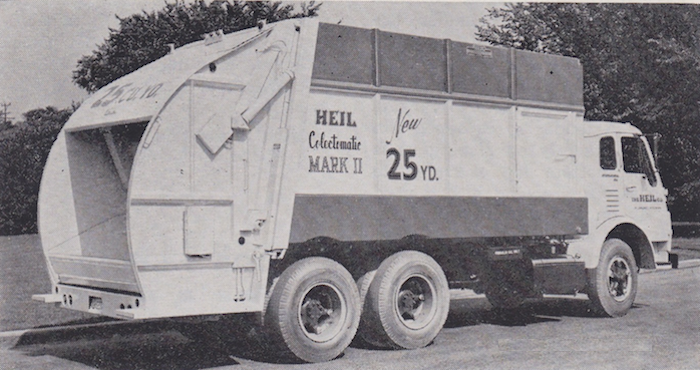
Introduced in 1962, the 25-yard Mark II was the biggest refuse packer that Heil had ever produced. With a powerful packer and ejection discharge, this was the safest and most efficient 25-yarder on the market 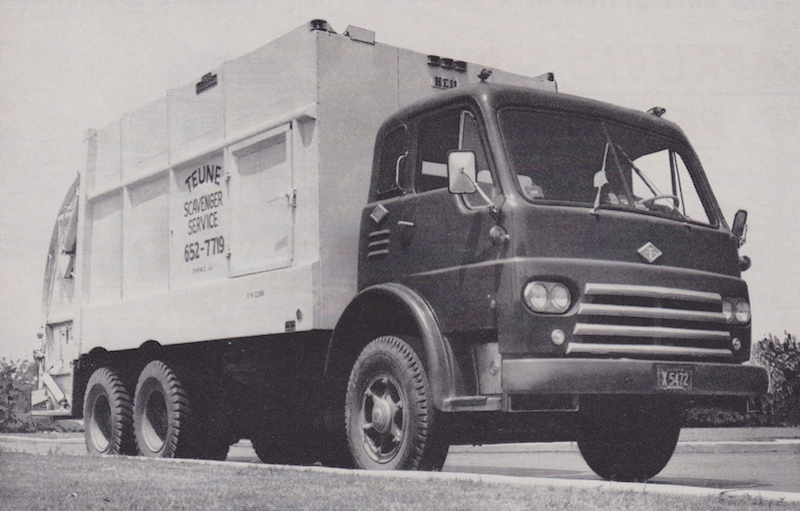
This handsome Diamond T cabover with 25-yard Mark II was owned by a Chicago-area contractor 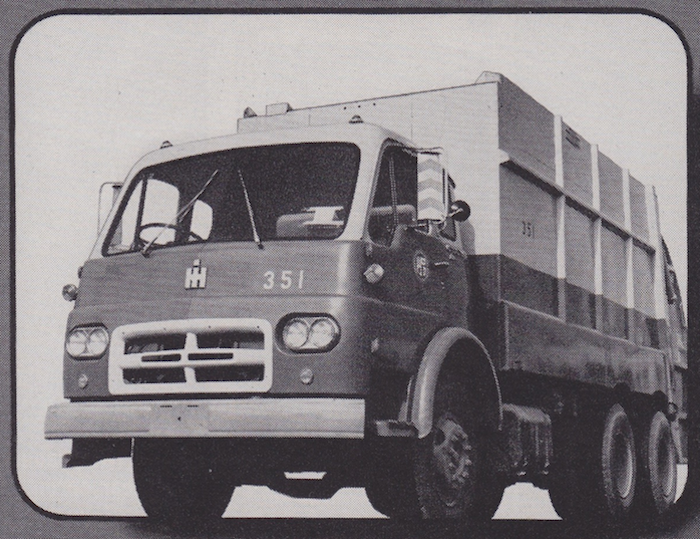
1963 International with 25-yard Mark II for the City of Los Angeles, Bureau of Sanitation, had Allison automatic transmission and right-hand drive. L.A. also used Leach, Gar Wood and even Pak-Mor rear loaders before switching exclusively to Heil, which they bought in large numbers 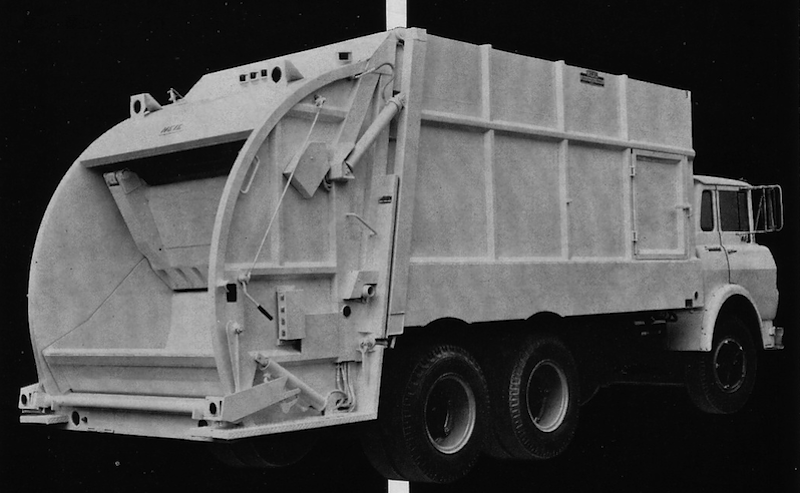
1964 was the last year for the Mark II, and many changes had been made to the body during its four year production run. Note the reinforced edge of the packing panel on this 25-yard model, and the change in the shape of the upper tailgate; Besides being longer, the 25-yard body was also 7" taller than other models, and thus the tailgate had to be heightened to match up. Early 25-yard Mark II's used sheetmetal panels to hide this transition in height.
PATENTS:
7/2/16 © 2016 All Rights Reserved Photos from factory brochures/advertisements except as noted Logos shown are the trademarks of respective manufacturers |
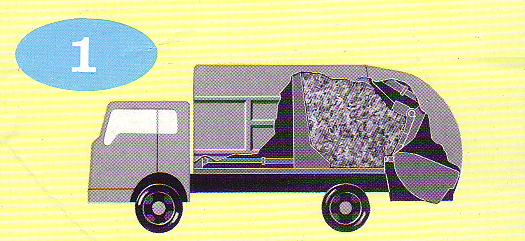
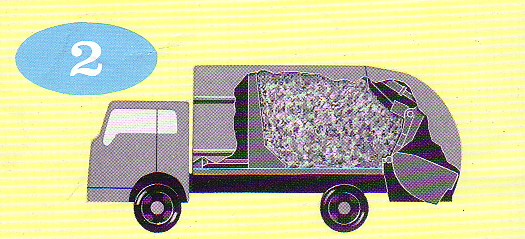
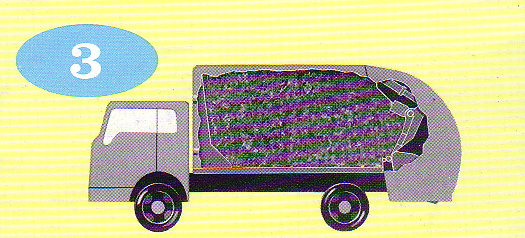
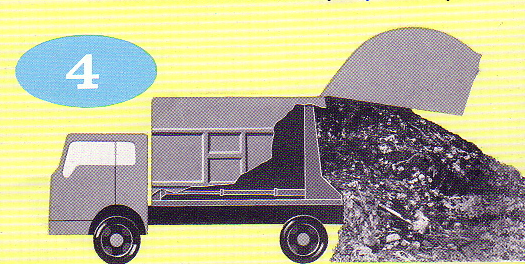
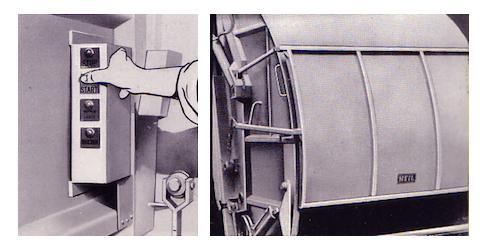 Push-button control stations were used to operate the Mark II packer. Early models had a station on each side of the tailgate, but the street-side station was eliminated around 1961. Pushing START button initiated complete packing cycle, and STOP button interrupted it during any point desired. HOPPER LOWER button dropped the hopper during any point in cycle in the event of a jam. BUZZER button was used to signal driver in cab.
Push-button control stations were used to operate the Mark II packer. Early models had a station on each side of the tailgate, but the street-side station was eliminated around 1961. Pushing START button initiated complete packing cycle, and STOP button interrupted it during any point desired. HOPPER LOWER button dropped the hopper during any point in cycle in the event of a jam. BUZZER button was used to signal driver in cab.
